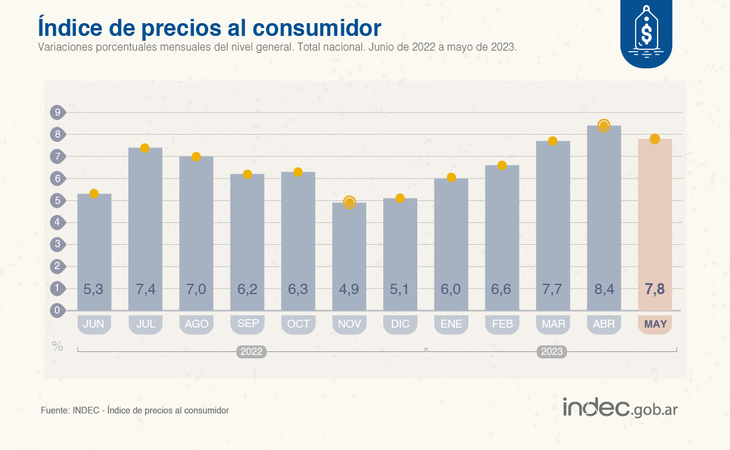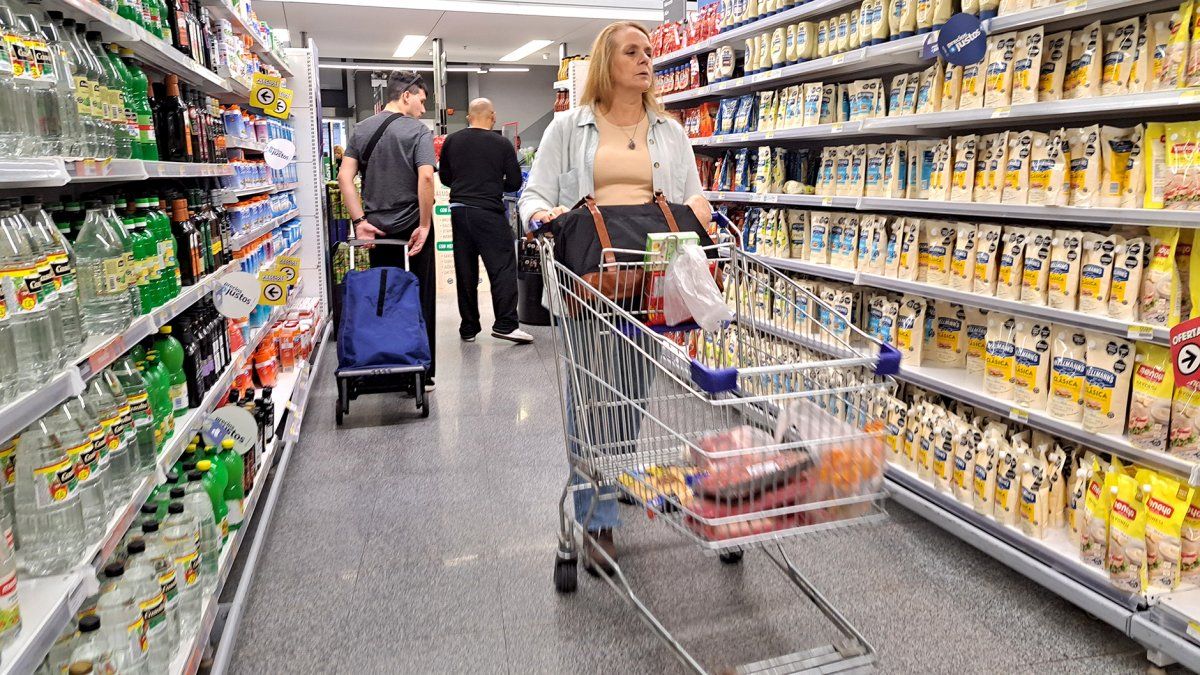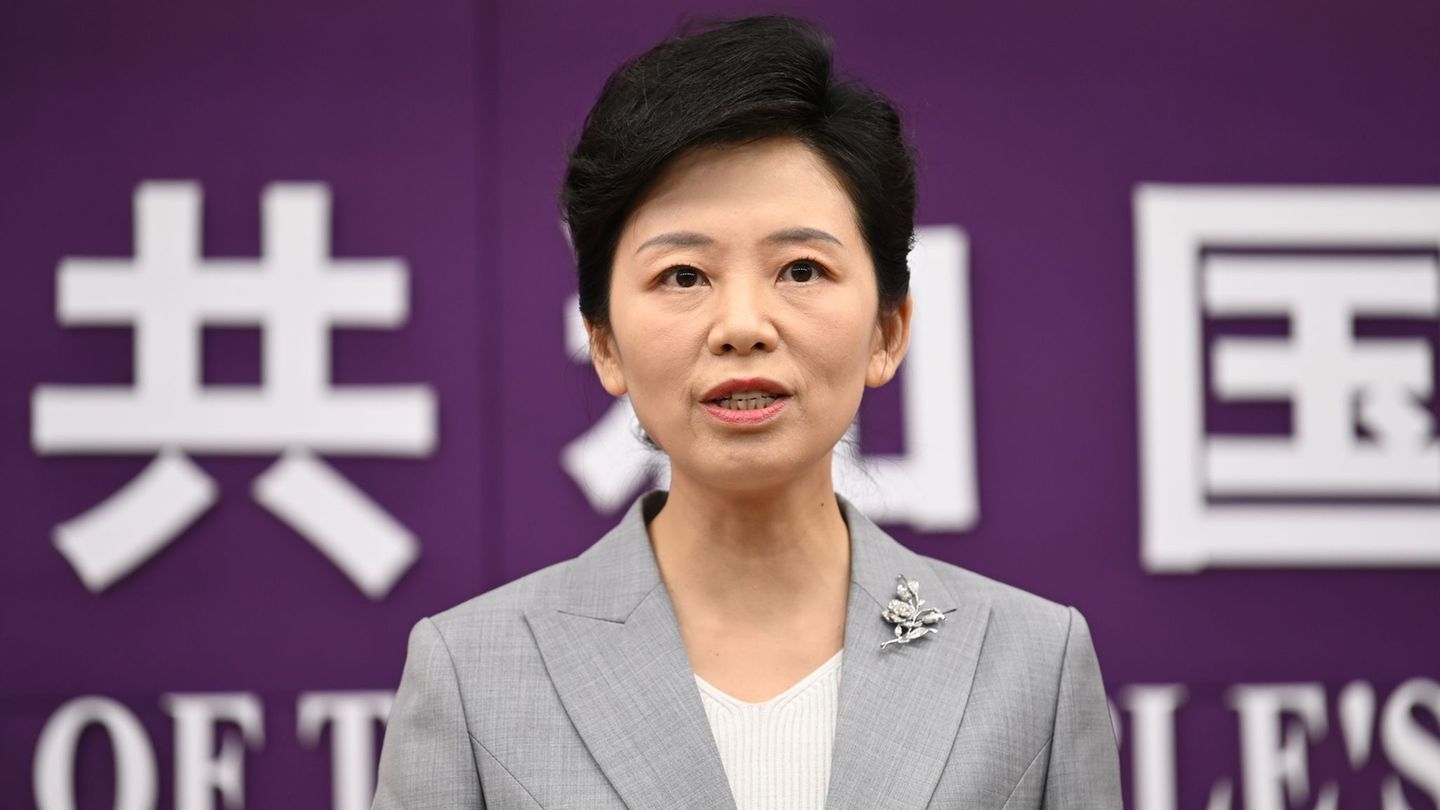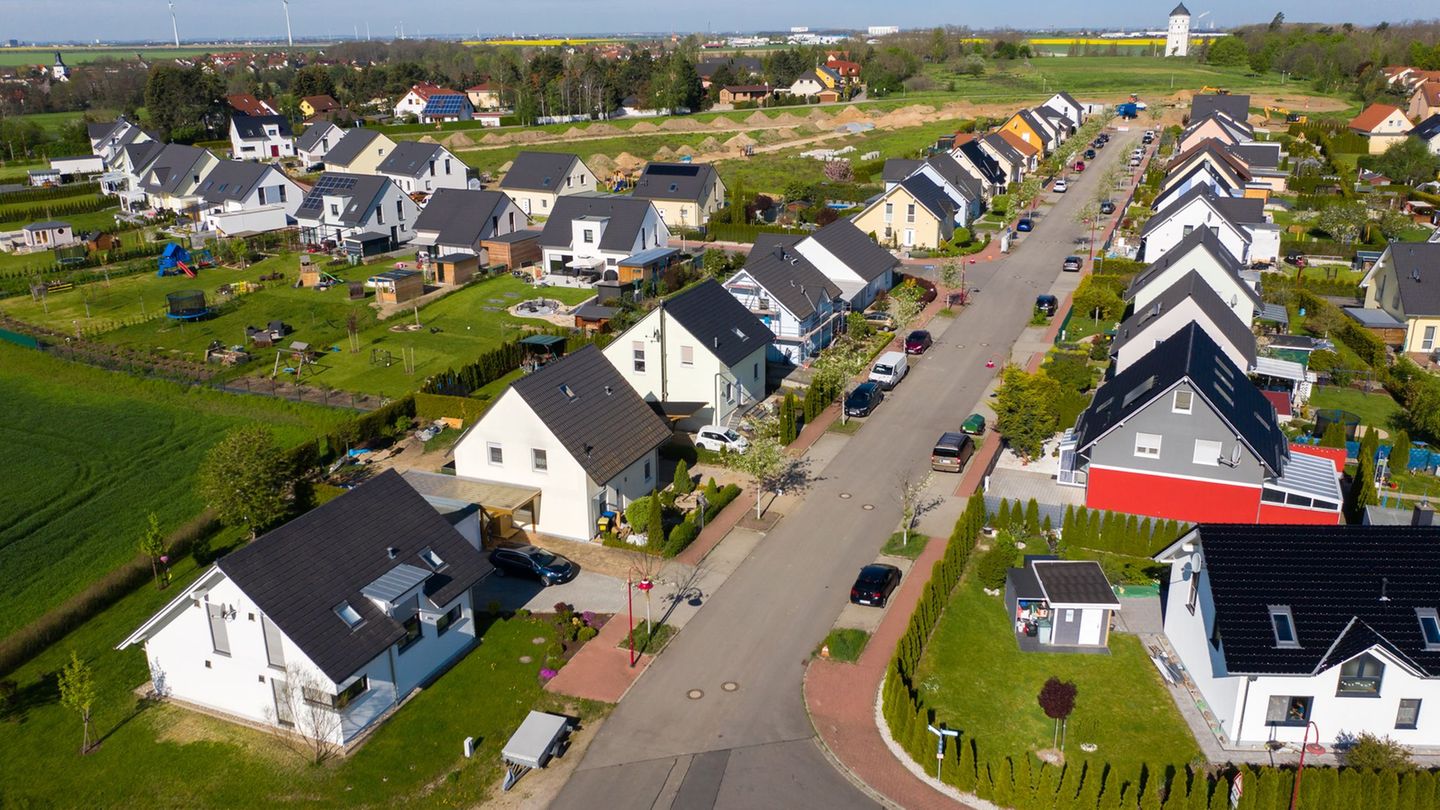Below what private consultants expected, inflation marked 7.8% in May and slowed down compared to April (it fell 0.6 percentage points). The Consumer Price Index (CPI) accumulated, thus, 42.2% so far this year, while in the last 12 months, reached 114.2%.
It should be noted that inflation had accelerated in April, marking a high 8.4%the highest monthly level since 2002 (when it climbed to 10.4% in April of that year, after the end of Convertibility).
Inflation: the sectors that rose the most and those that least
image.png
Housing, water, electricity and other fuels was the segment that rose the most last month with an increase of 11.9%, as a result of the increase in rates for electricity and natural gas services through the network. The podium was completed with Restaurants and hotels (9.3%) and Health (9%)the latter driven by the rise in medicines and in the quotas of prepaid medicine companies.
For his part, Food and beverages advanced 5.8% in May, which, together with Education (4.9%), were the two segments with the lowest increases in the month.
in dialogue with Ambitthe economist Rocio Bisang from Eco Goassured that “The main category that explains this slowdown is food, which after several months at worrying levelsexperienced a significant drop and registered an increase of 5.8%”.
In particular, he mentioned that meat and fruit “showed variations significantly below the rest of the products”. In the case of meats, chicken and beef stood out. Regarding the latter, Bisang said that “drought continues to affect production, forcing an oversupply in the market as a result of the higher cost of food. In the case of chicken, on the contrary, its price fell due to the recovery in supply after the heat wave in March.”
Another price that was also relevant was the one of the fruits that experienced a fall and contributed to moderate the indicator. It was highlighted “particularly the orange that registered a drop close to 10%, after several months on the rise“, the Eco Go economist explained to this medium.
Inflation: what does this data mean for analysts
“I think the data from the last few months indicates that the process of high inflation that we are going through increased its rate again and would be finding a new floor of around 7% per month. High inflation processes are characterized, on the one hand, by the high volatility of the monthly inflation rate. In this sense, if we look at the trend that has been consolidated in the last 12 months, with fluctuations, we see more of an acceleration of inflation than a deceleration,” he said. the economist Gabriel Caamaño from Consultora Ledesma.
On the other hand, he explained, that “High inflation processes by themselves do not stabilize, rather they tend, with their volatility, to diverge”. “Today the government’s economic policy scheme can only provide very short-term anchors and, therefore, very little effectiveness. With which, the key will begin to be the horizon that can begin to build the policy in the context of the electoral contest. In other words, the inflation rate can begin to stop diverging as the expectation of a non-disruptive stabilization plan in 2024 grows.”
Rocio BisangMeanwhile, he assured: “The inflation problem is far from being solved and, although we expect to see a further reduction next month (our estimates show inflation at 7%), we do not believe that the improvement will be sustainable over time. In an economy without reserves, with a gap of around 100%, deficit, distortion in relative prices and a tense debt market in pesos, the task of ordering the macro is imposed as a necessity to reduce inflation and it is necessary to of a consistent and articulated plan that makes it possible to orchestrate a coordinated solution to the situation”.
Inflation: the first slowdown of the year
image.png

With the data for May (7.8%), the first slowdown of the year occurred, since in April the CPI had risen to 8.4% per month. For its part, in January it had stood at 6%, in February it rose to 6.6% and in March it jumped to 7.7%.
Last month, the regions of the country that registered the highest increases were Northwest and Greater Buenos Aires with an increase of 8%, followed by La Pampeana (7.7%). Whosewhich was below the general measurement, stood at 7.5%, behind the the Northeast with 7.3% and finally Patagonia with 7.3%.
At the category level, regulated prices rose 9%, the Core CPI rose 7.8%; while the Seasonals had an increase of 6%.
Inflation: what is the projection for June
“The data from the first fortnight of June from the GBA price survey suggest that there was aa moderation compared to May, both because there was no increase in gas and because food is growing at a slower rate due to declines in vegetables. With this evolution, inflation for the month could be reduced to around 7%”they assured from C&T; a figure that also coincides with Eco Go’s projections.
Source: Ambito




